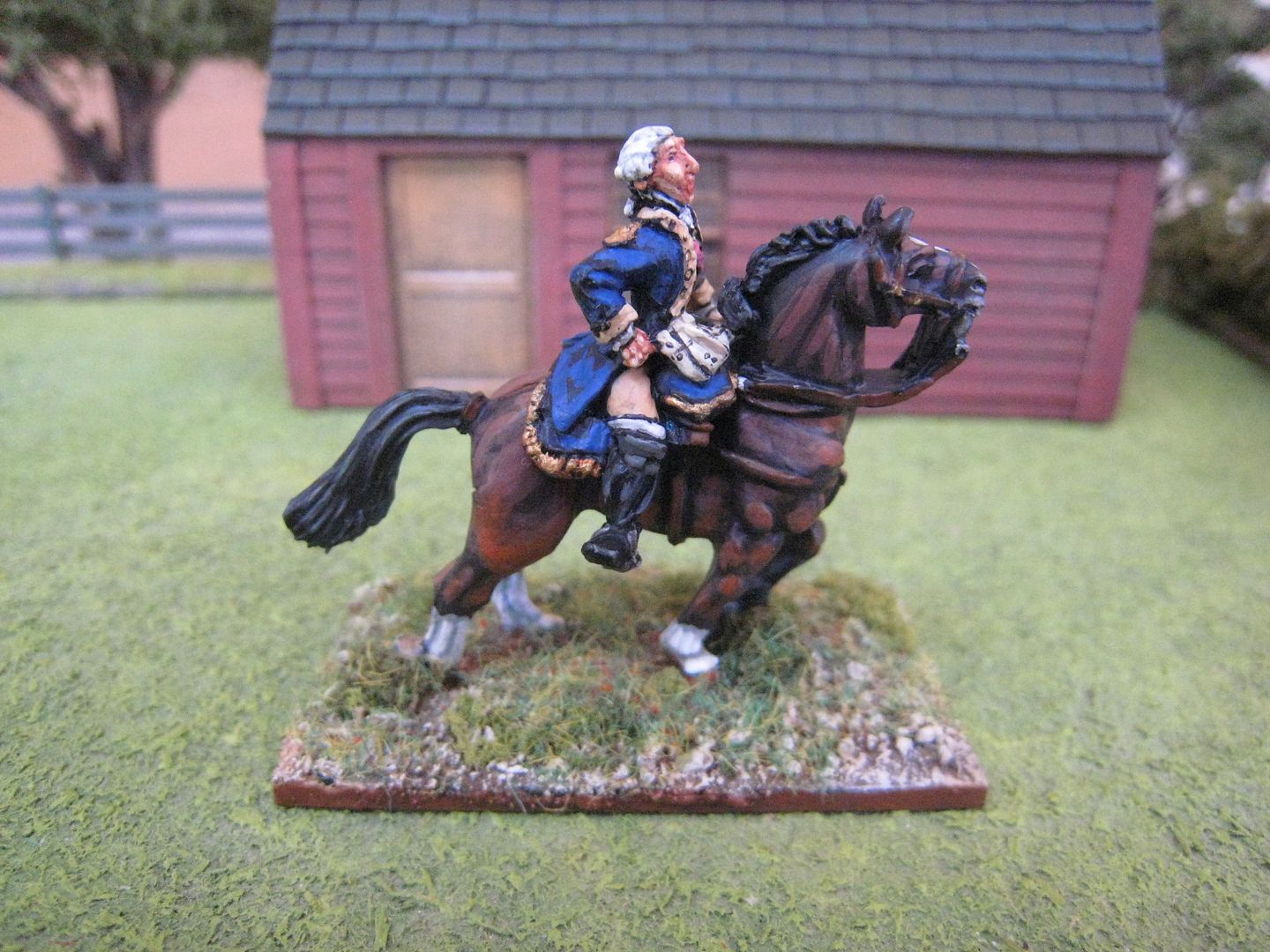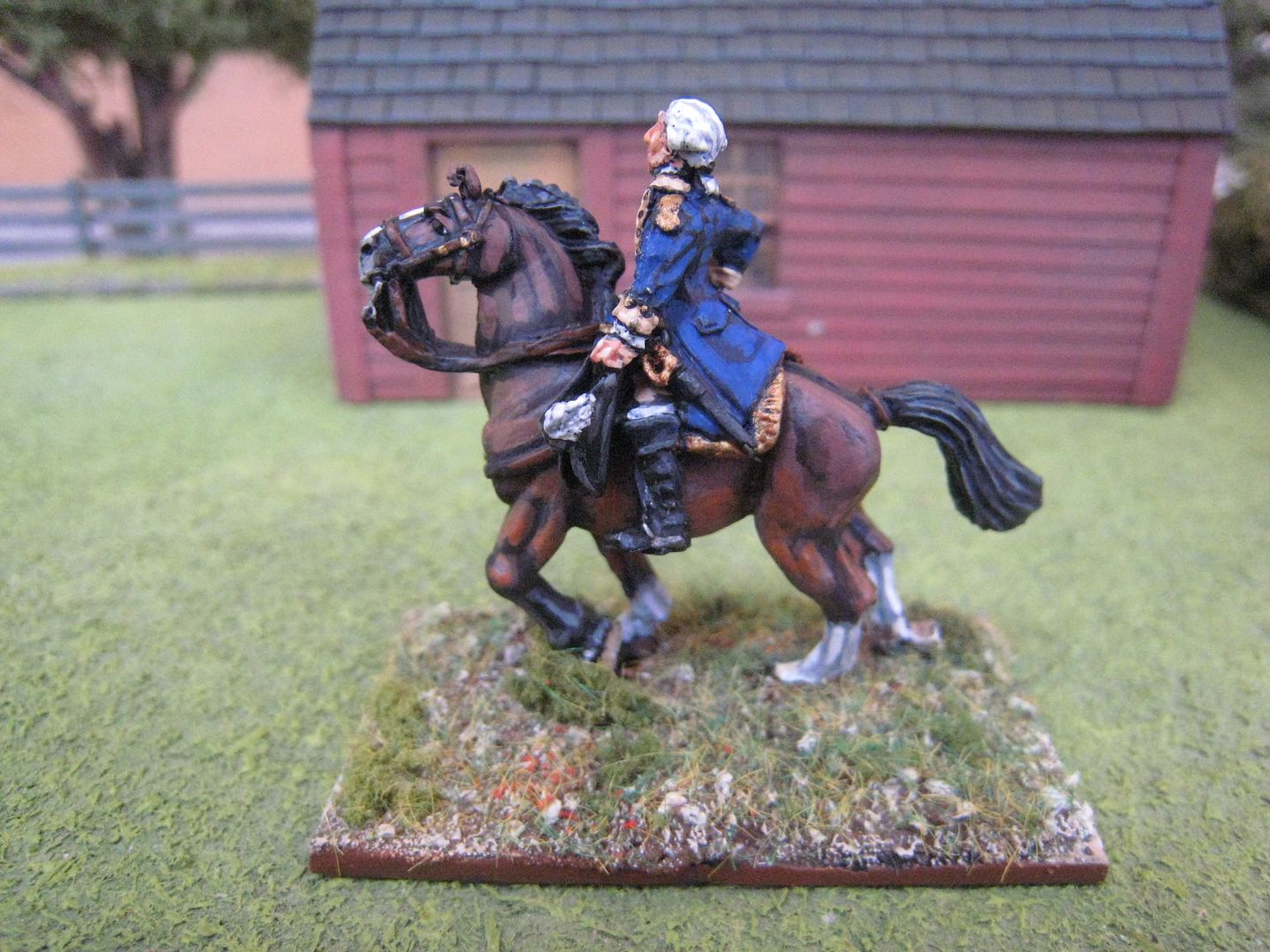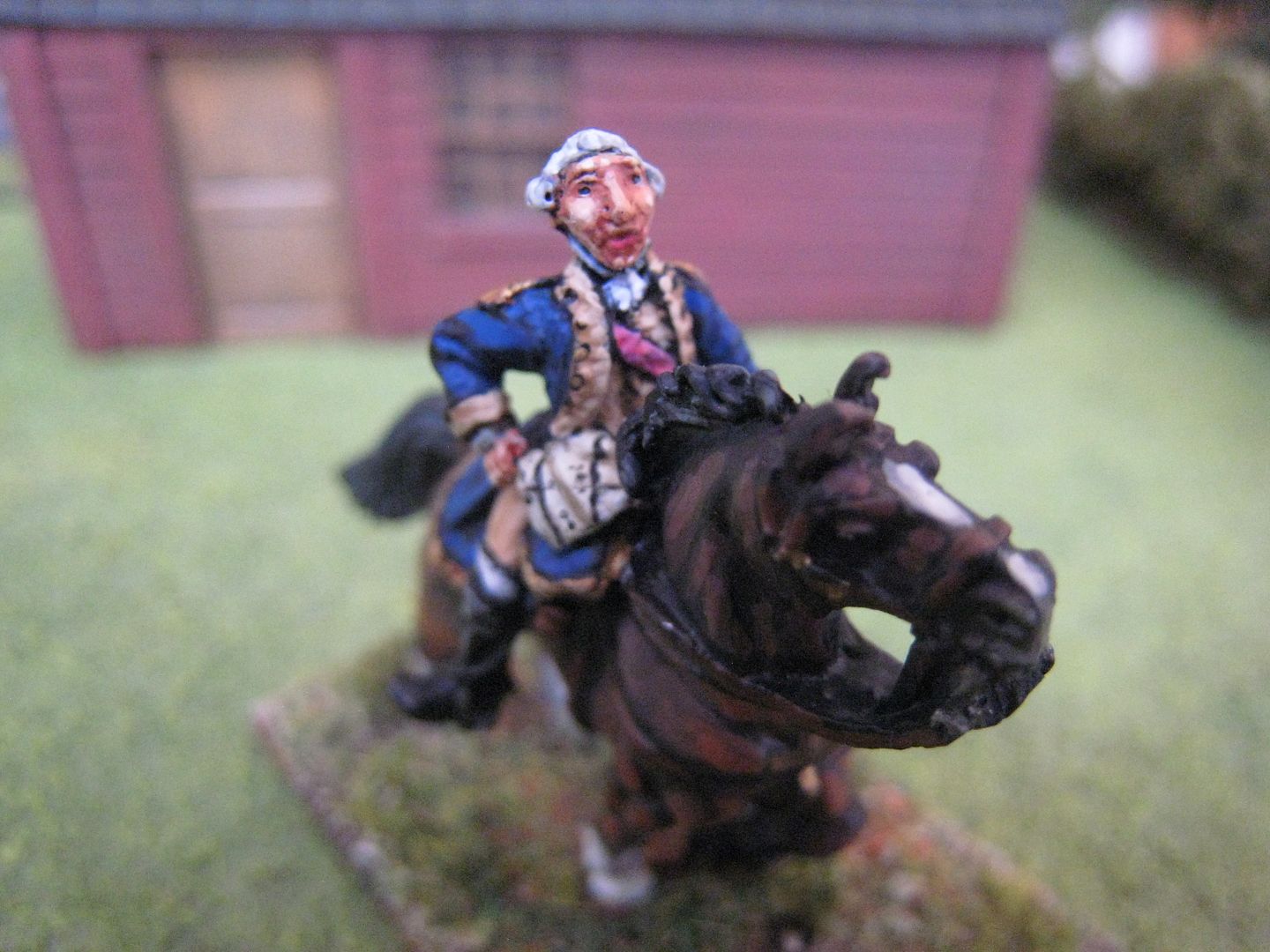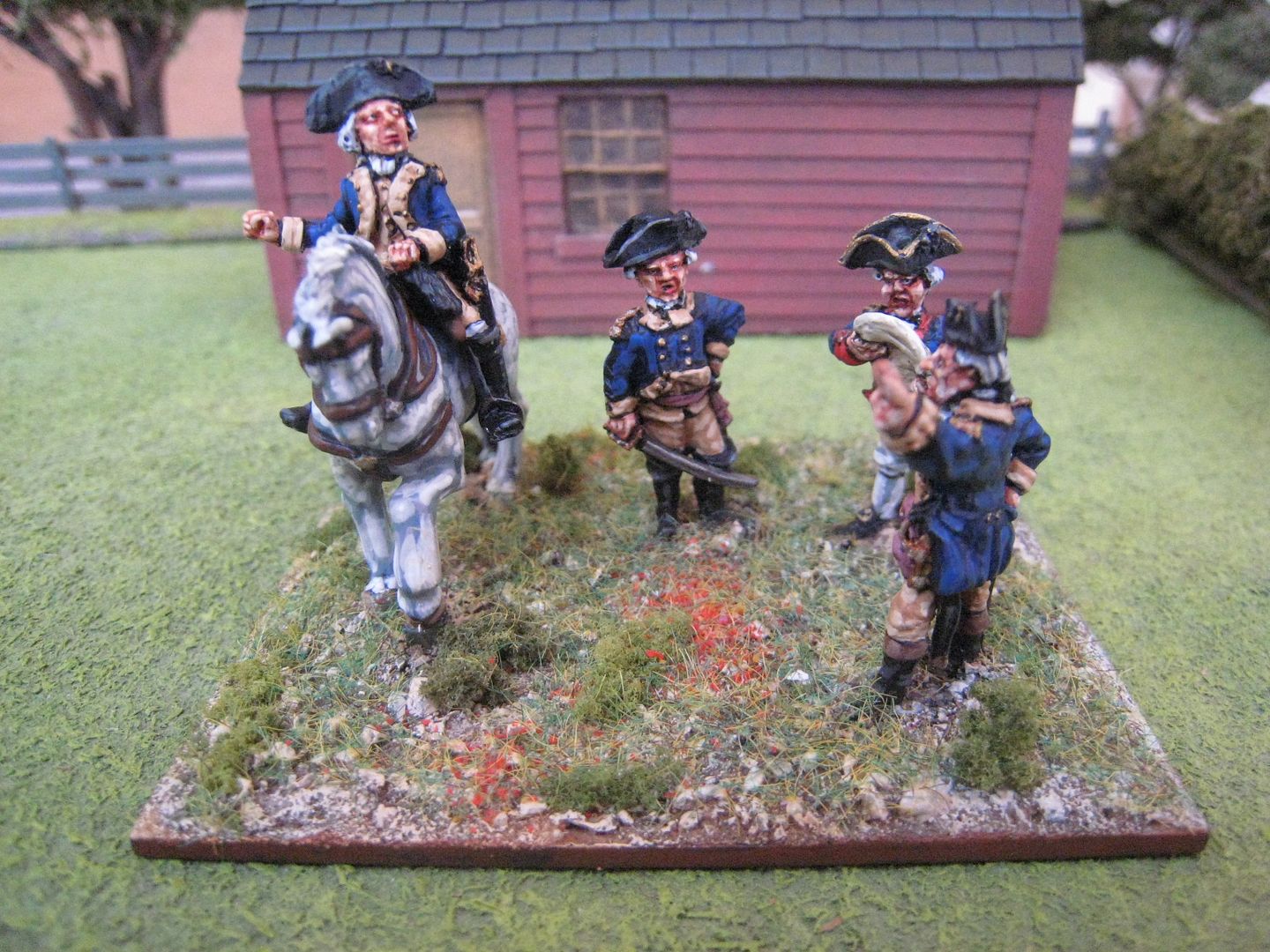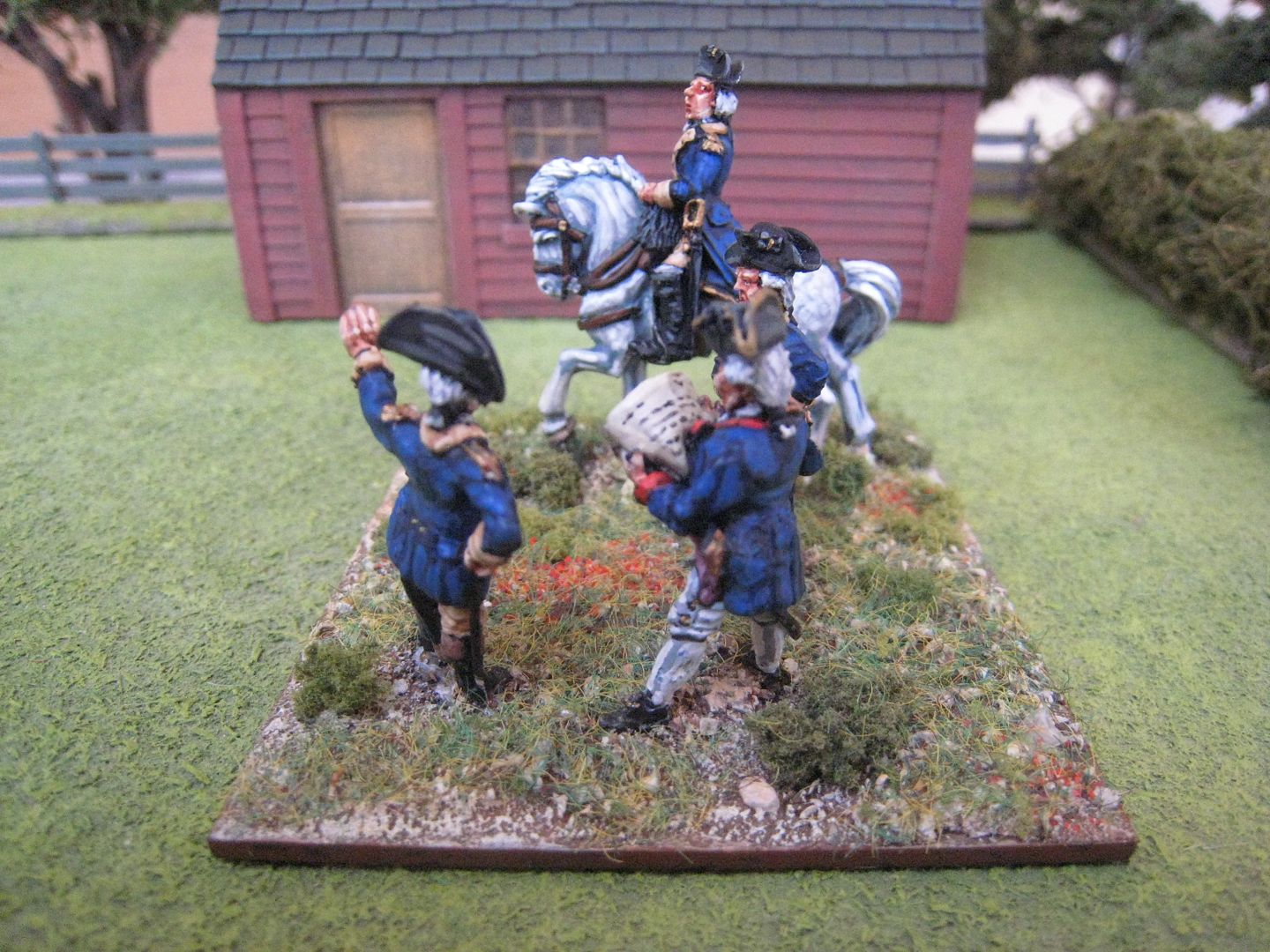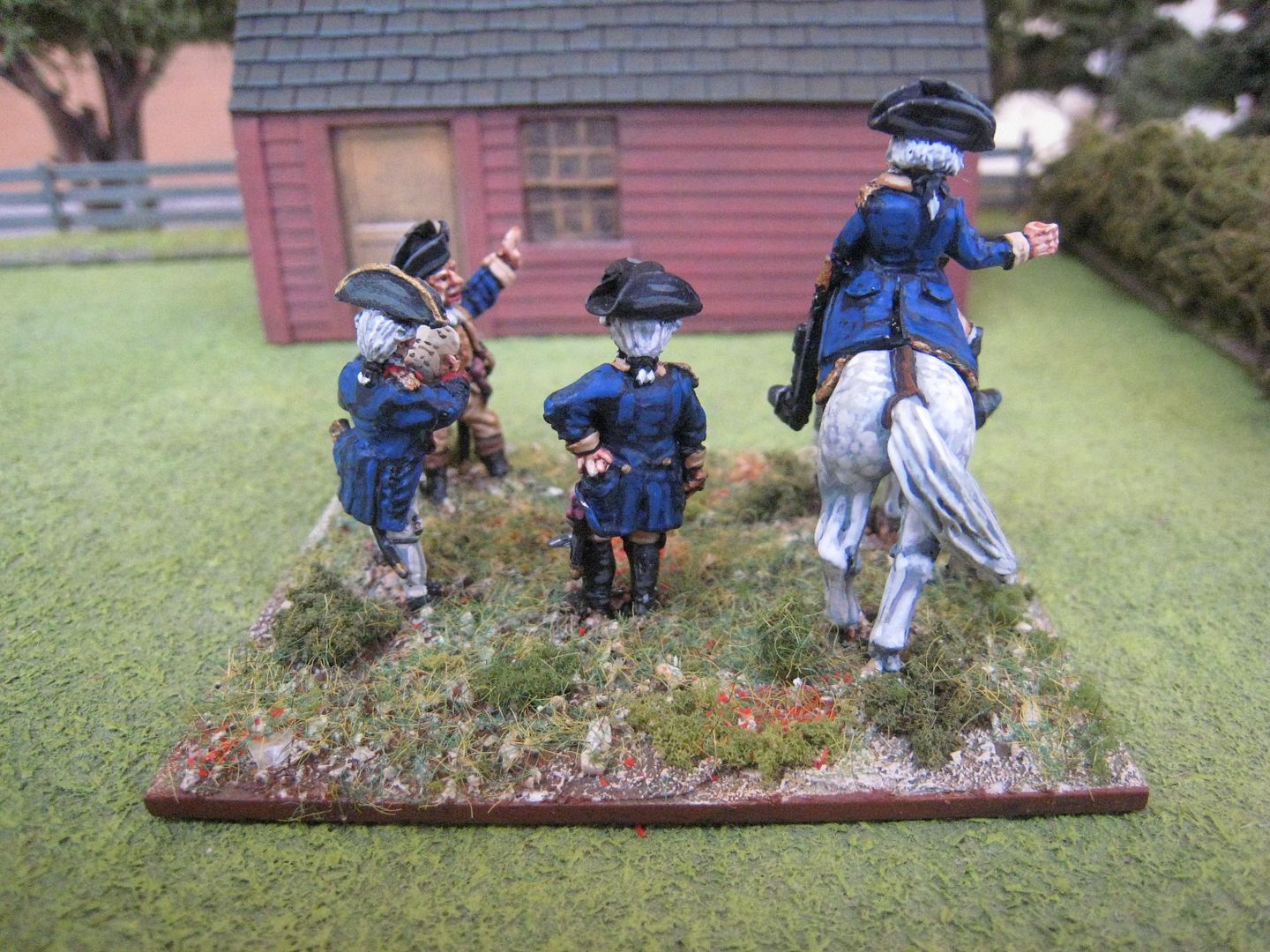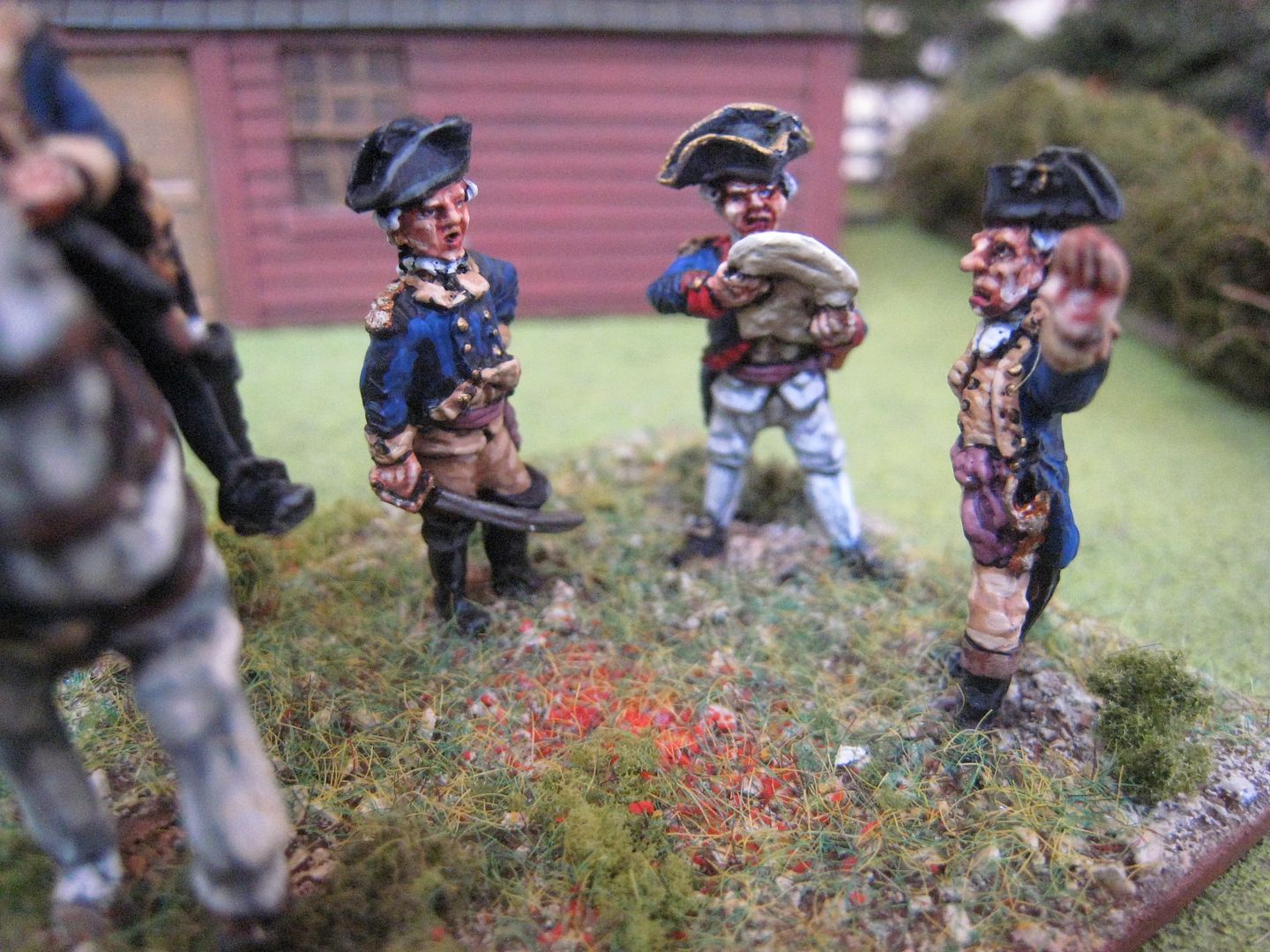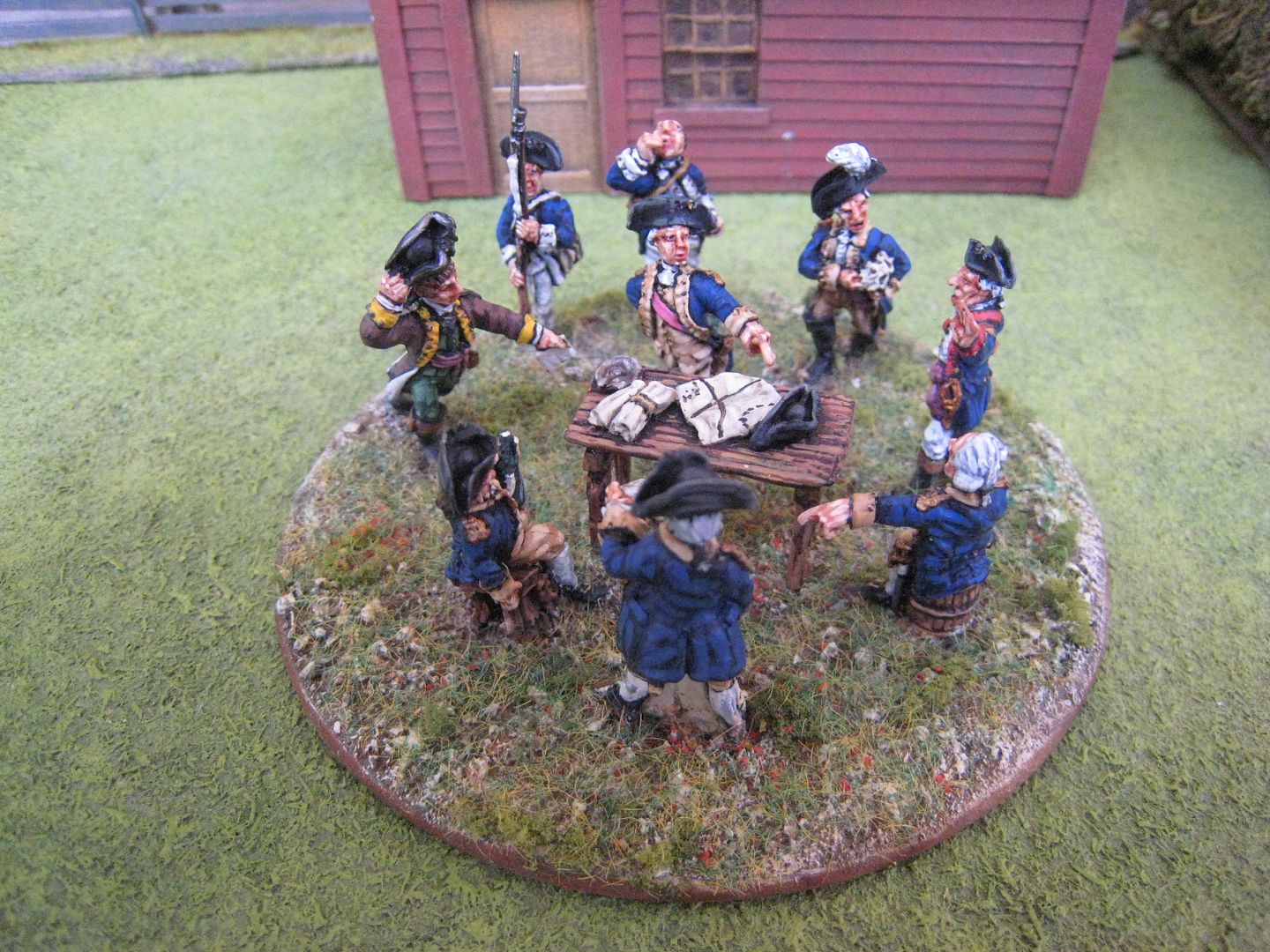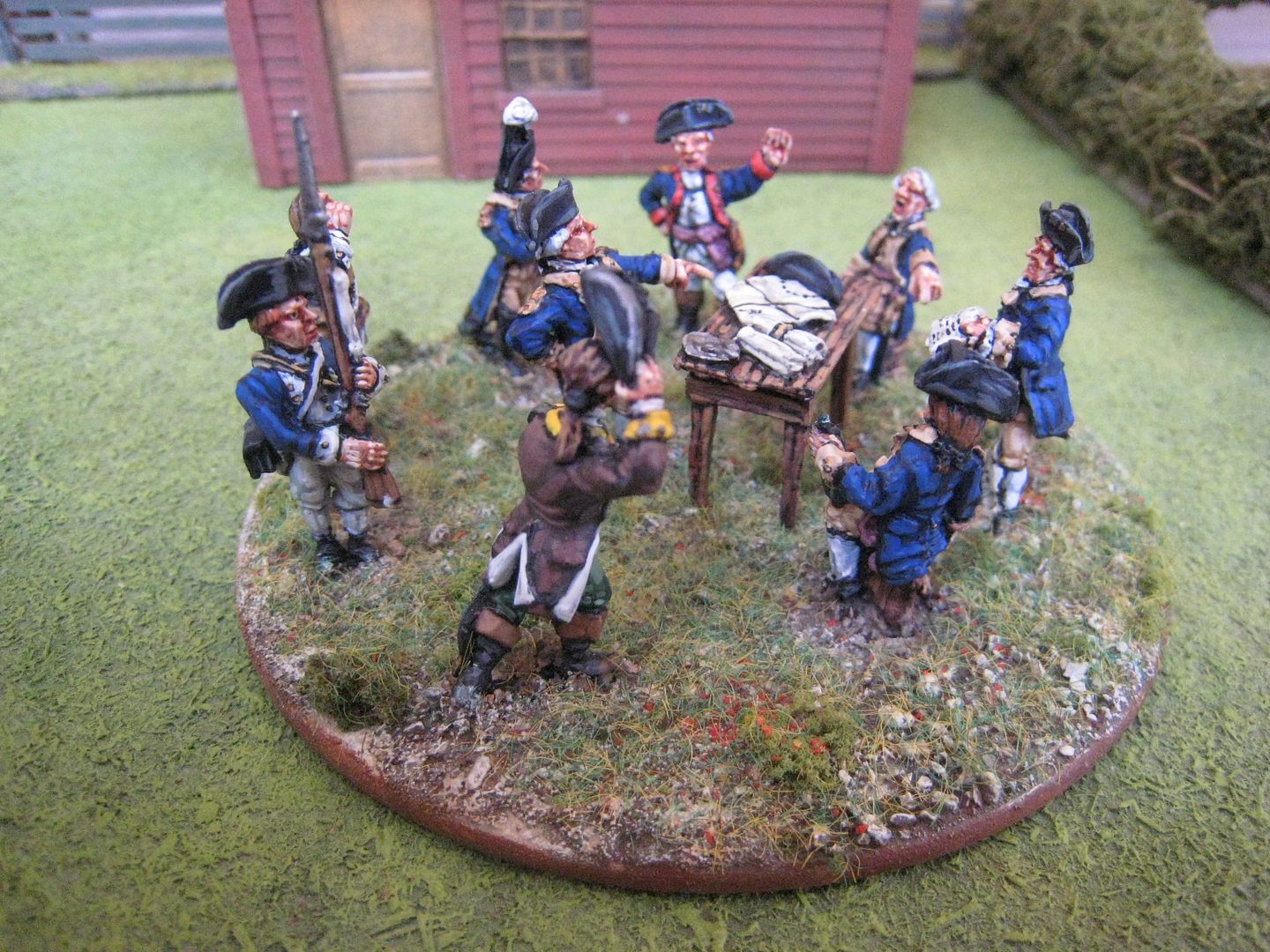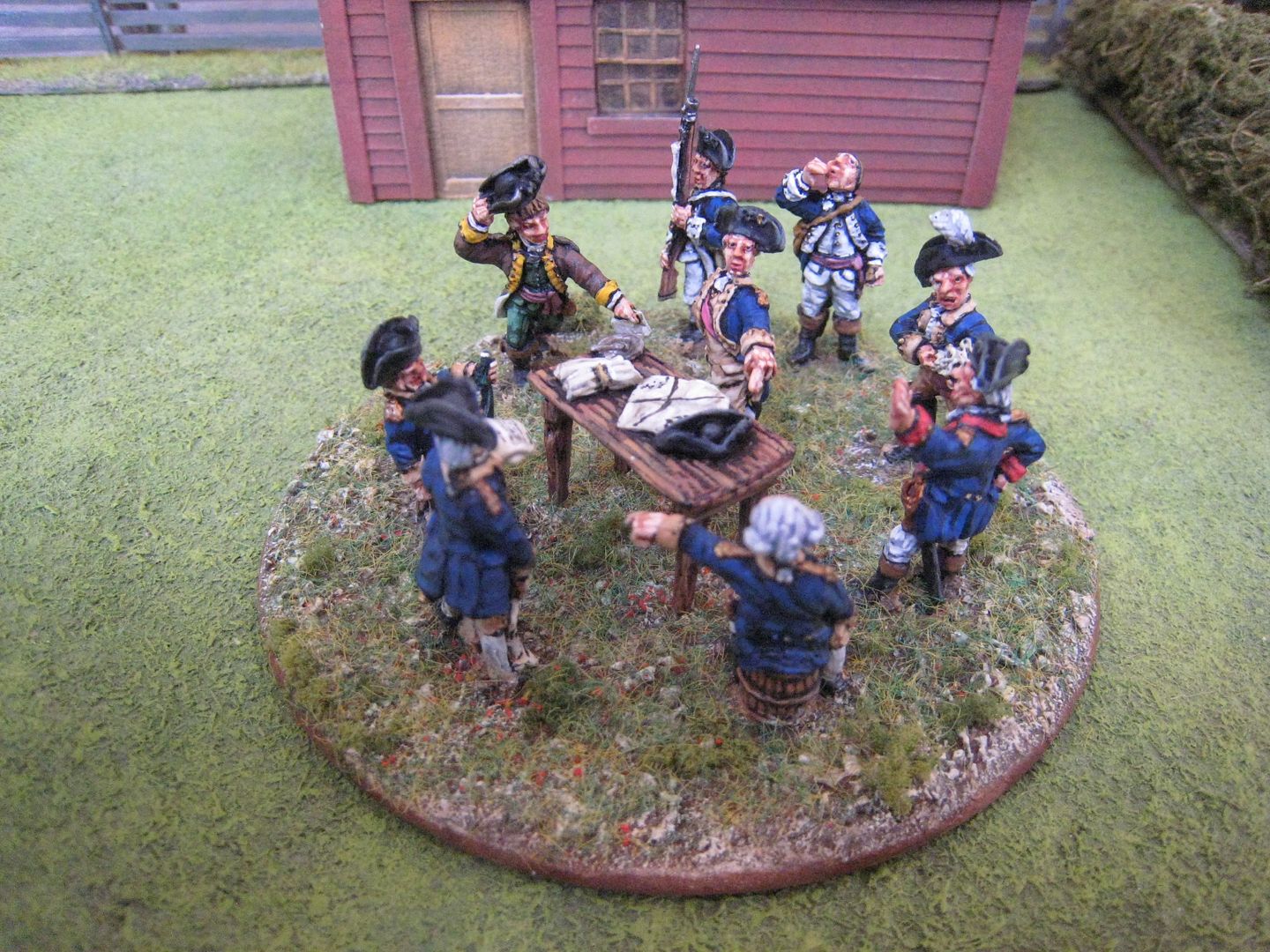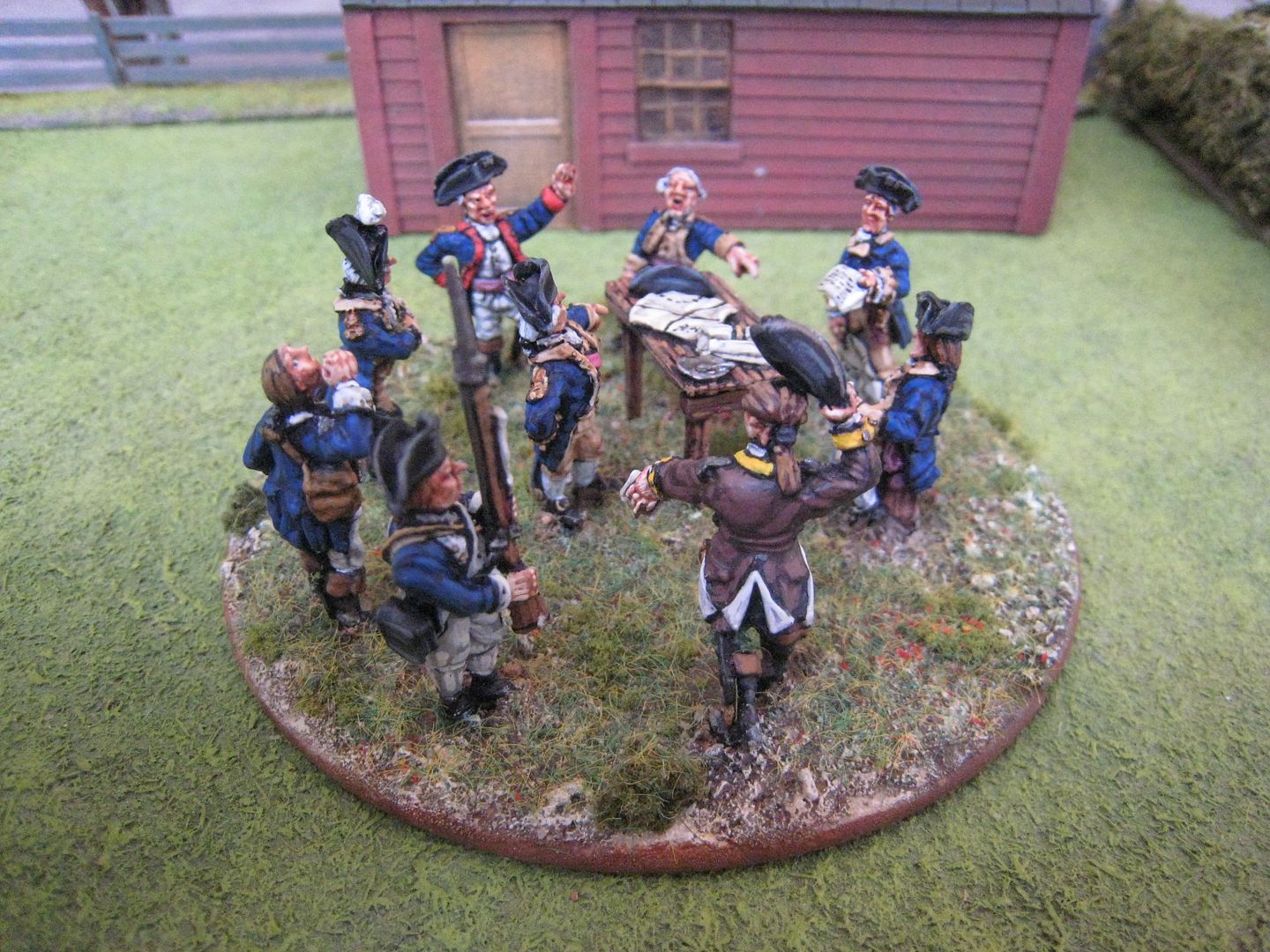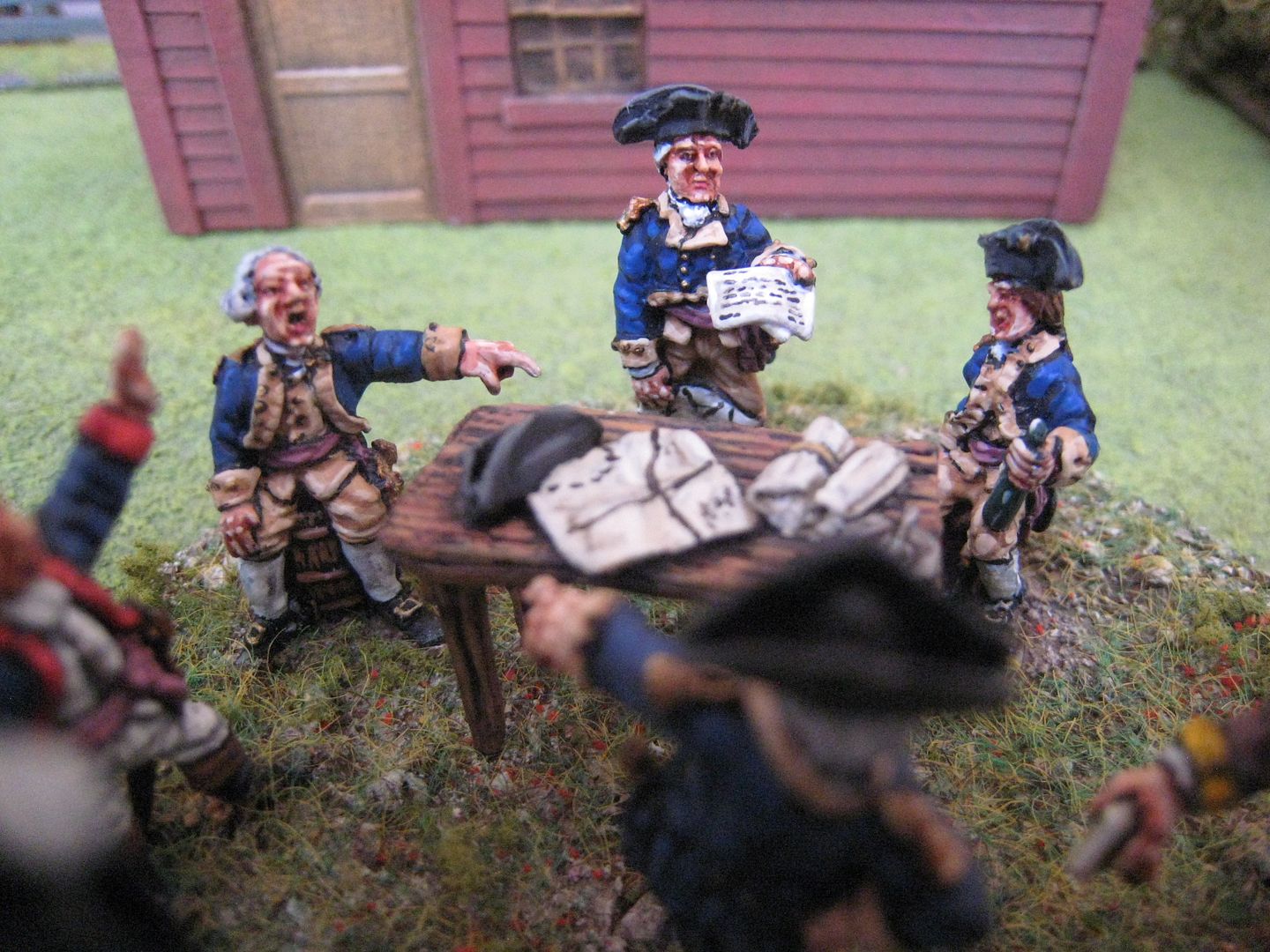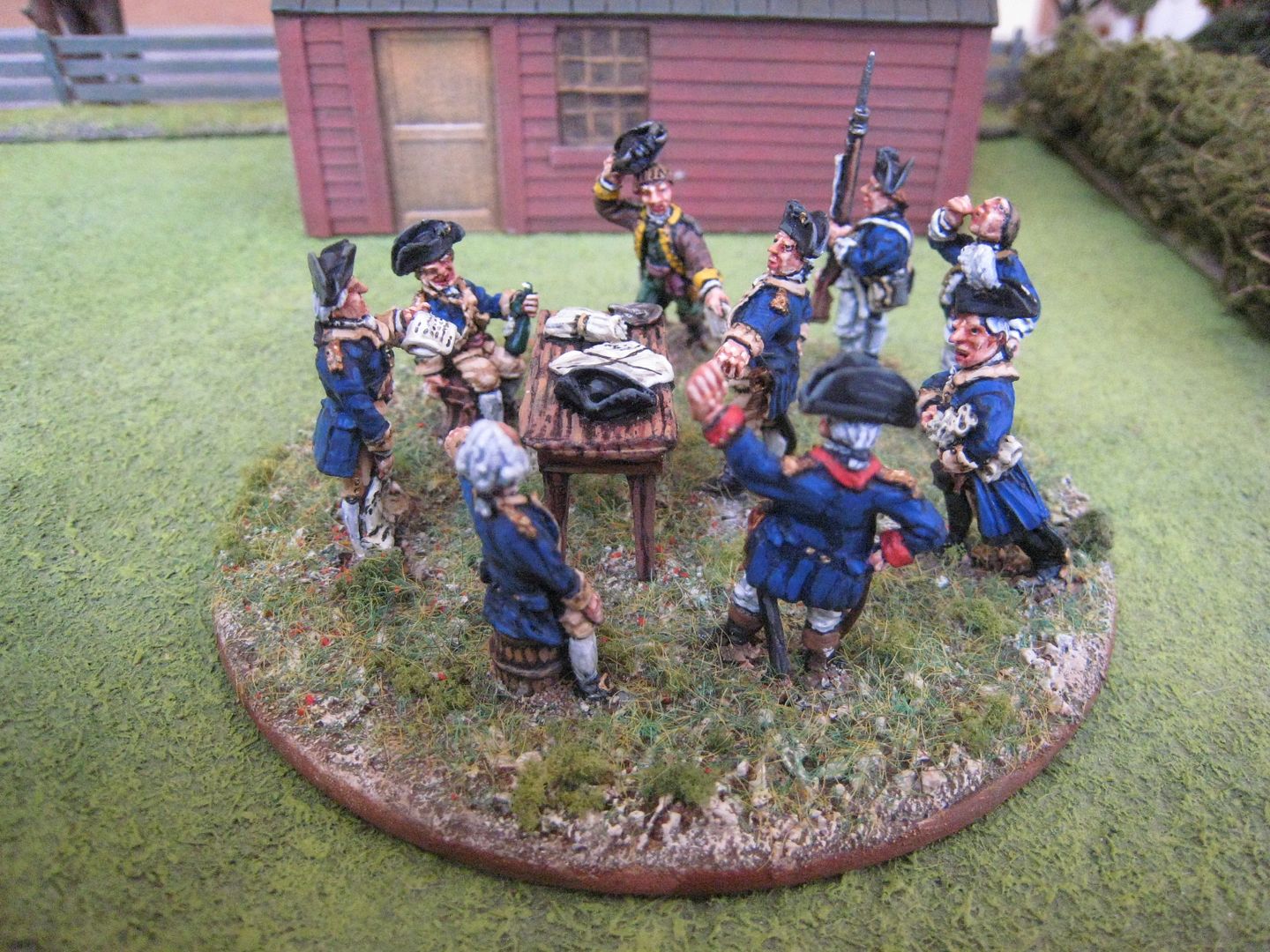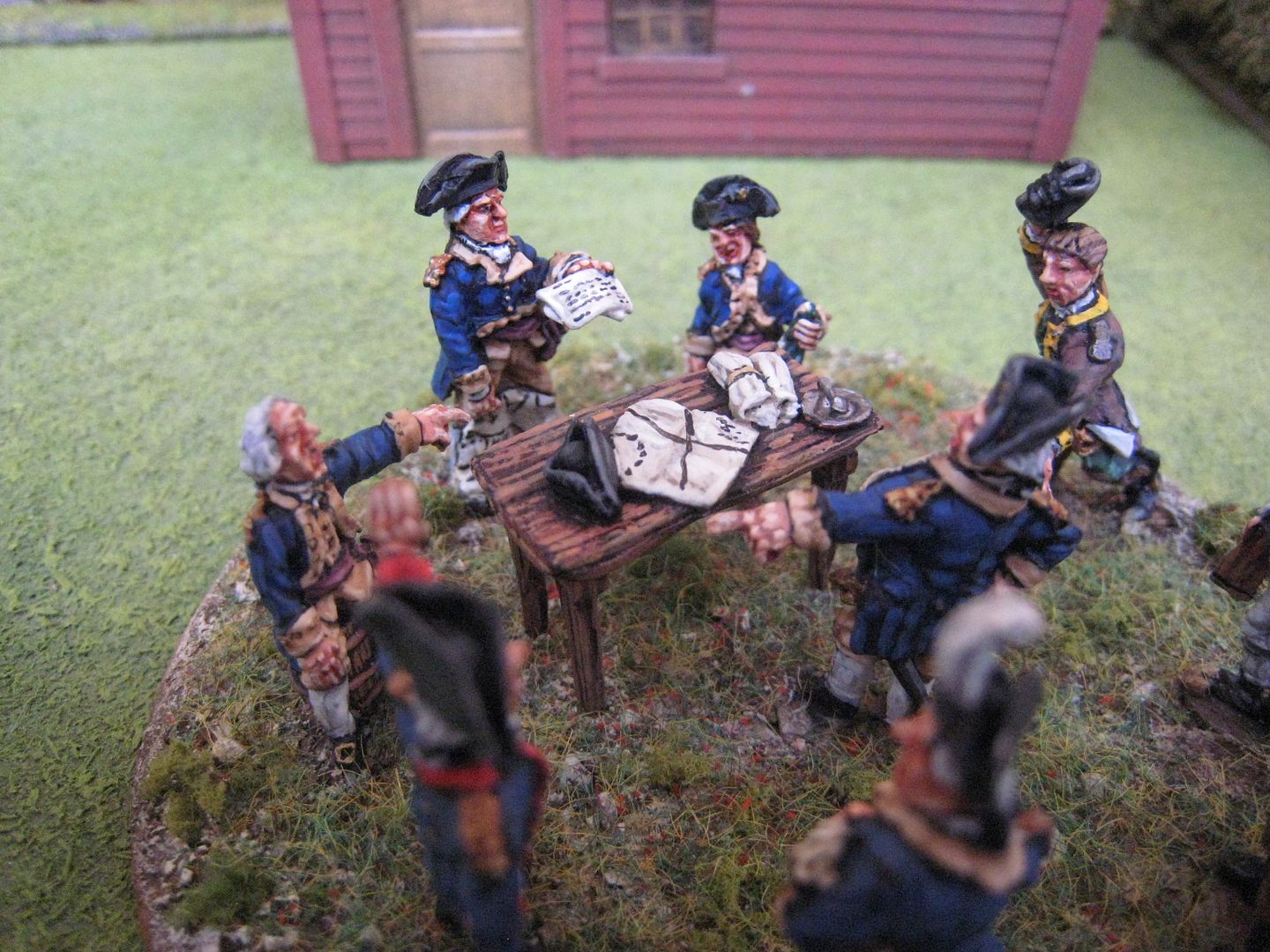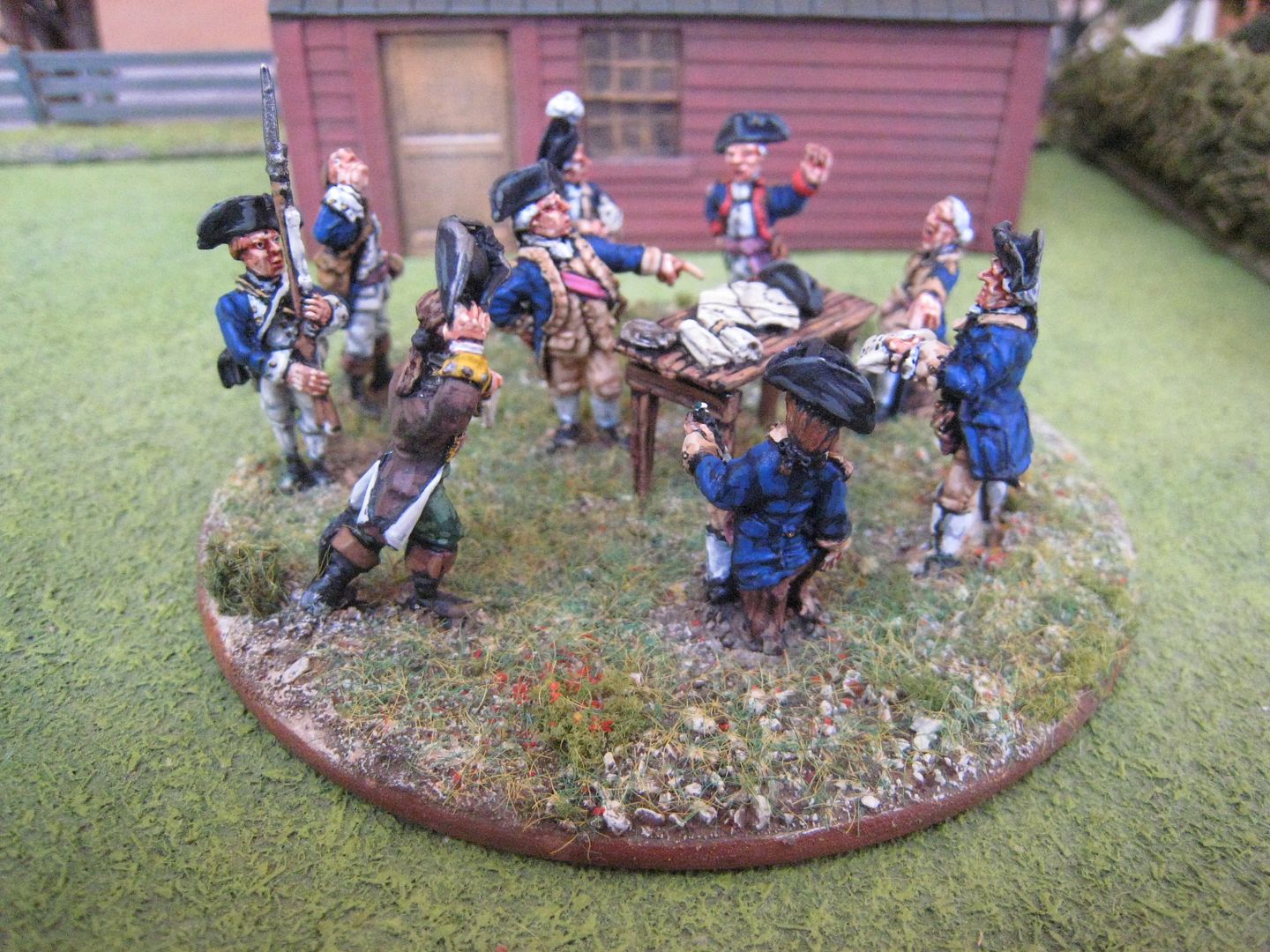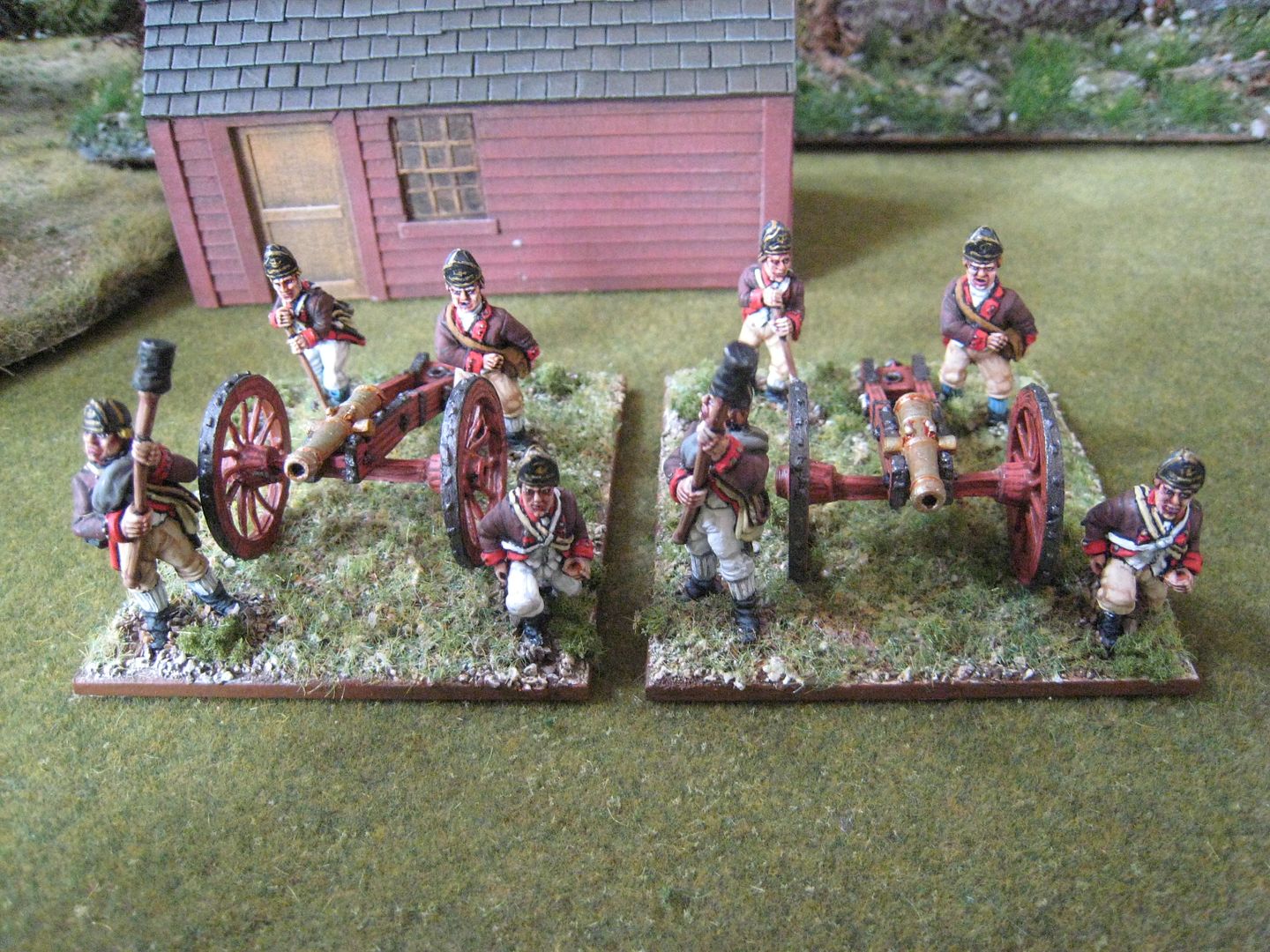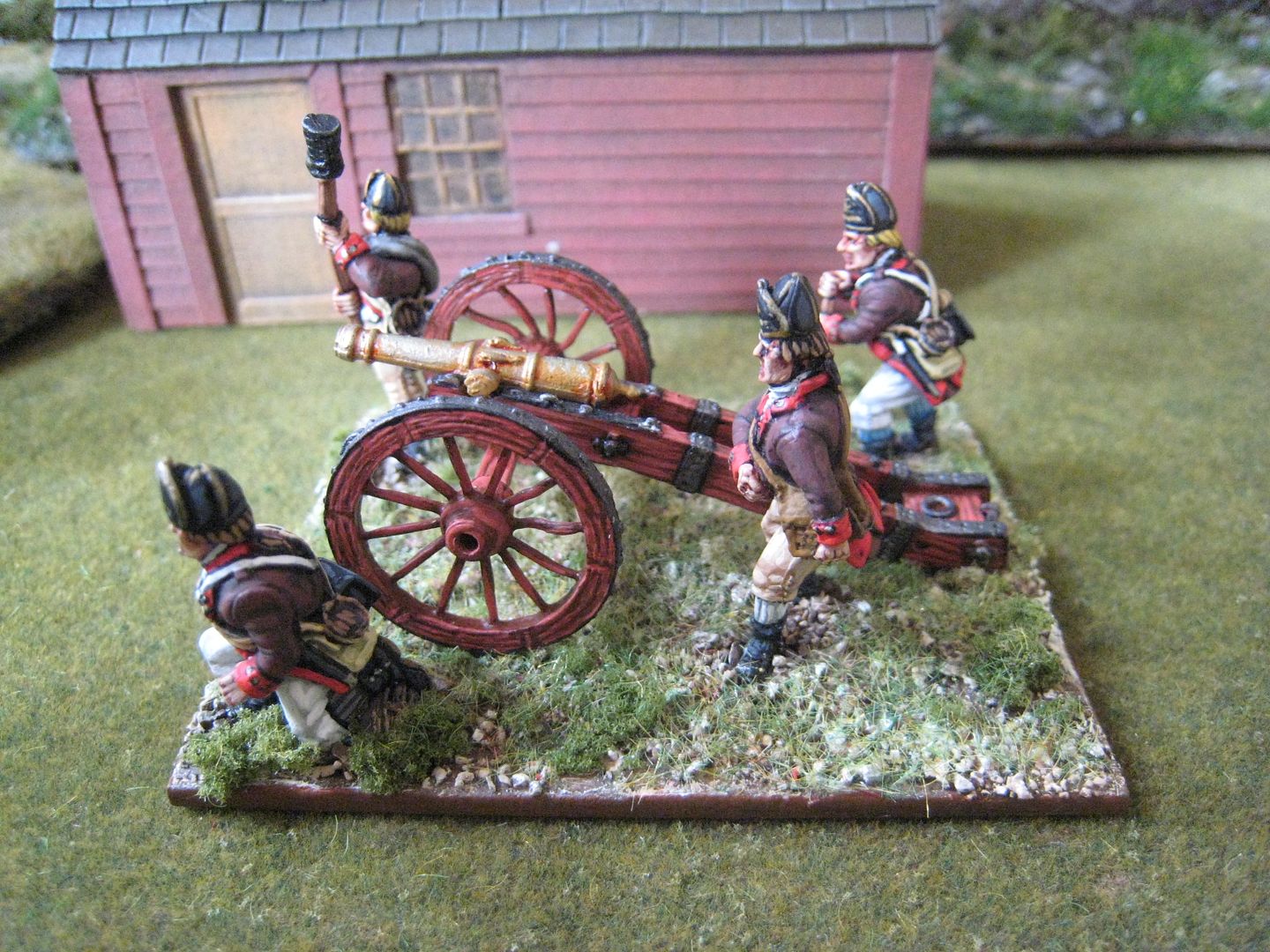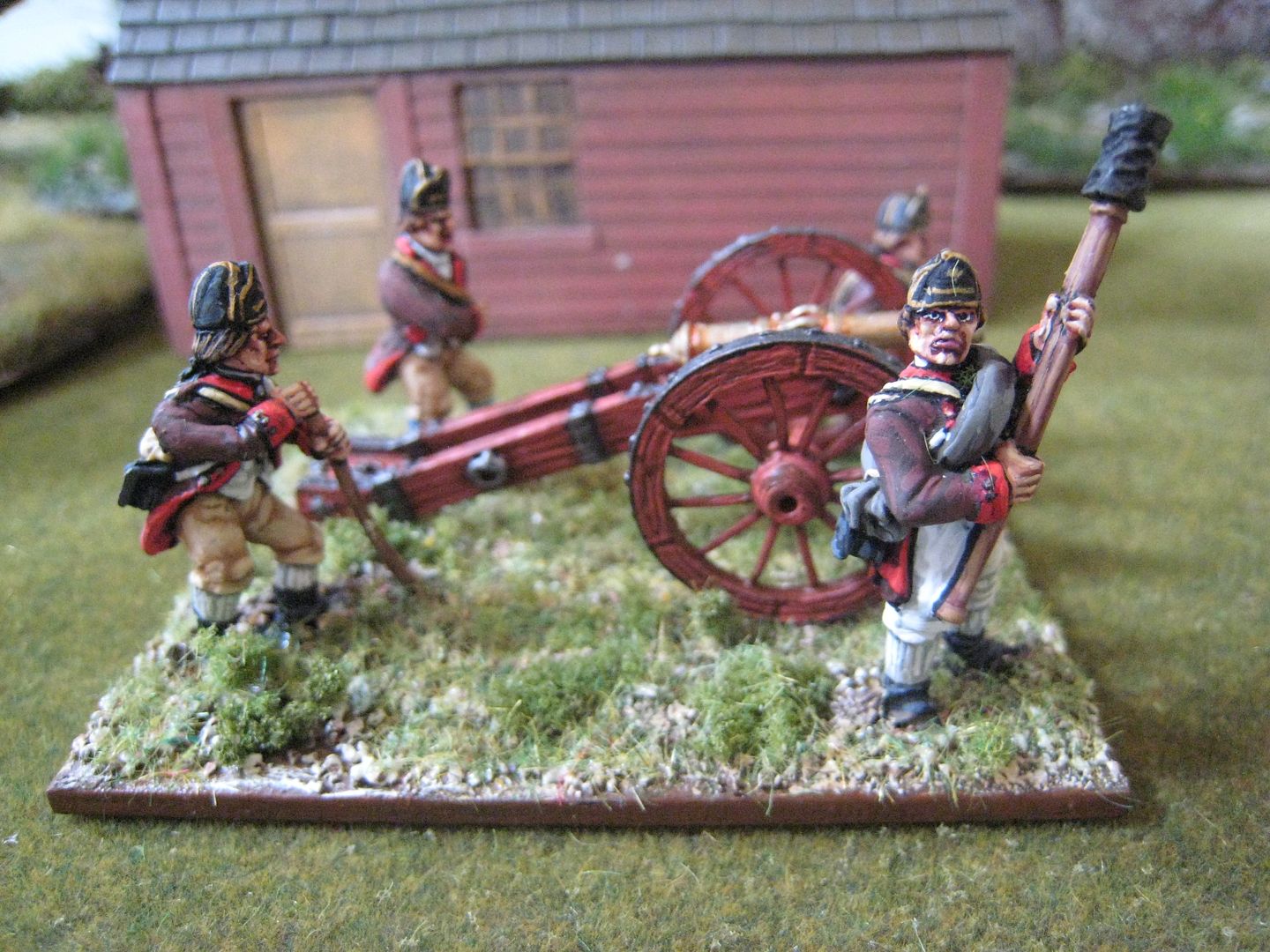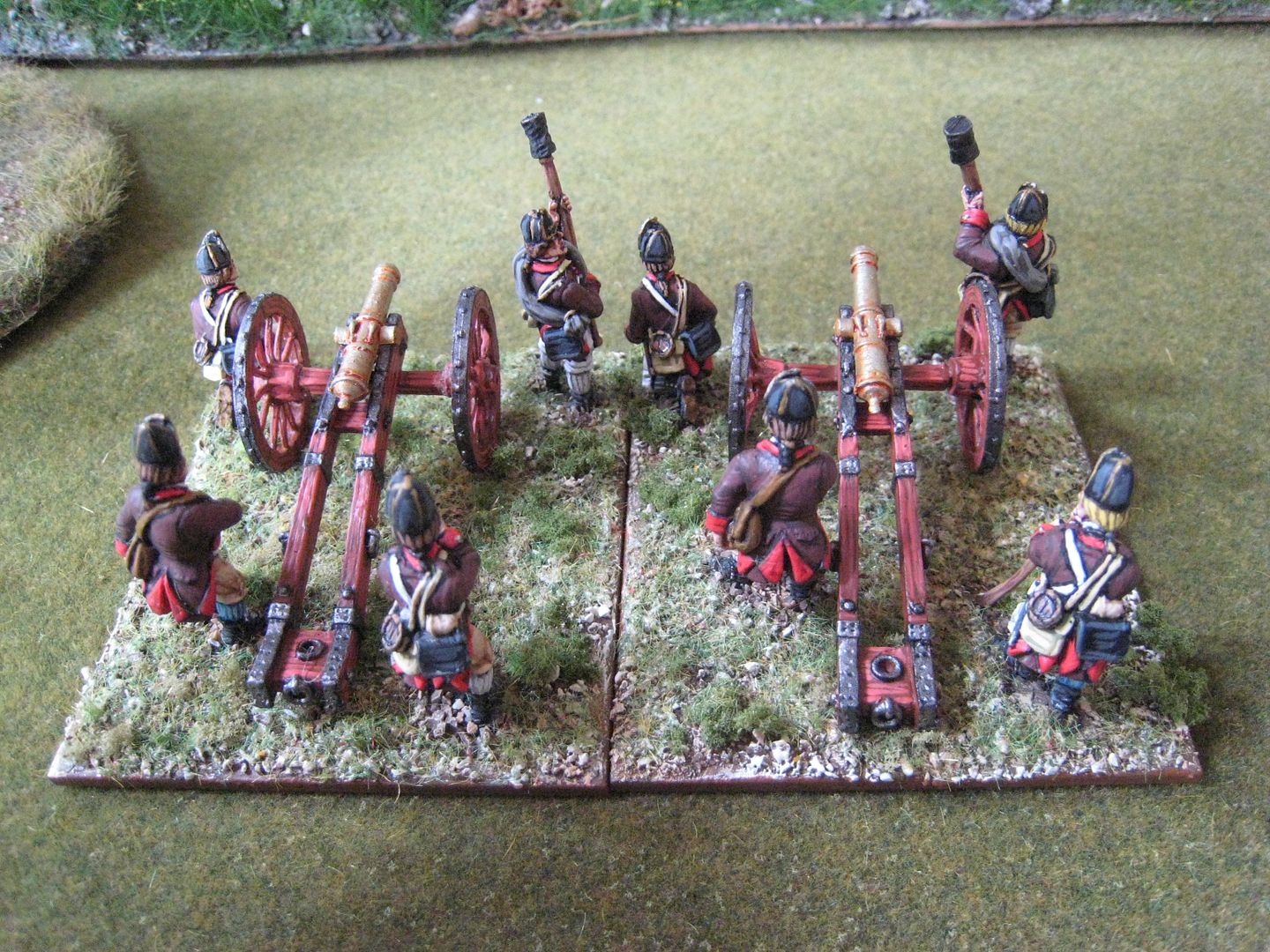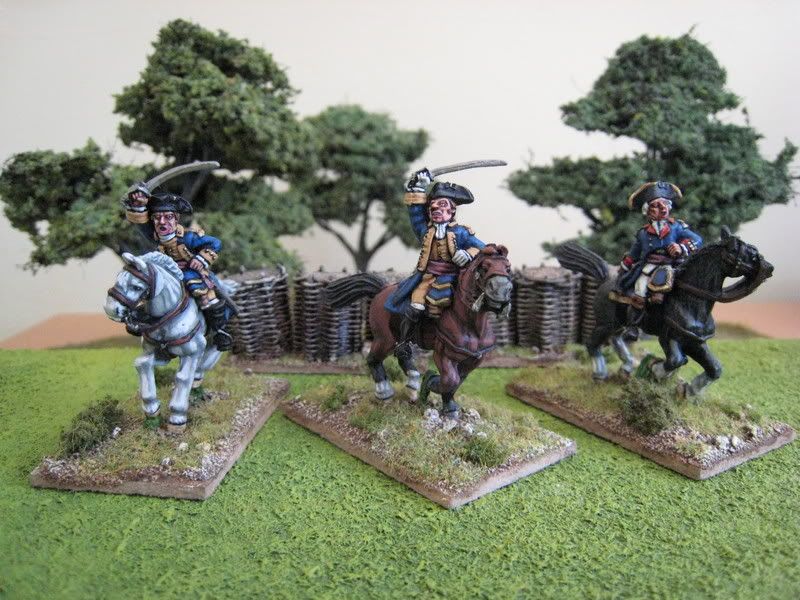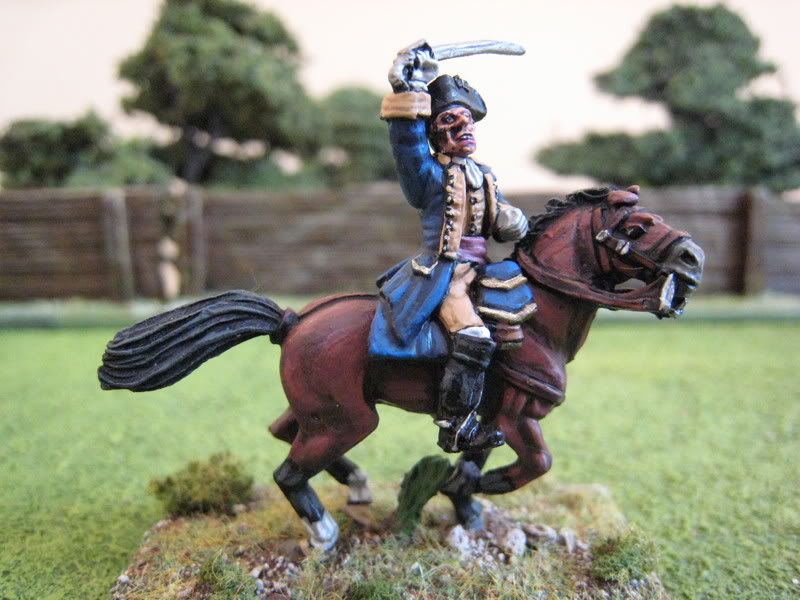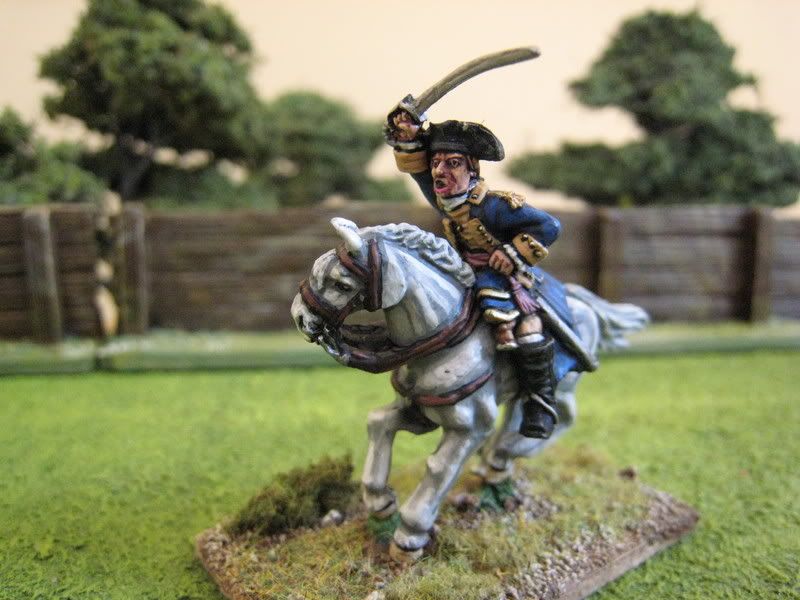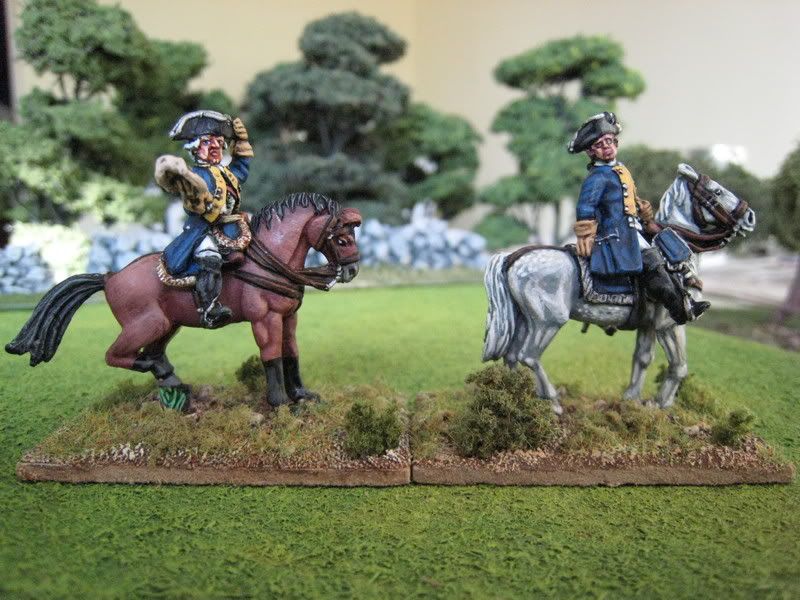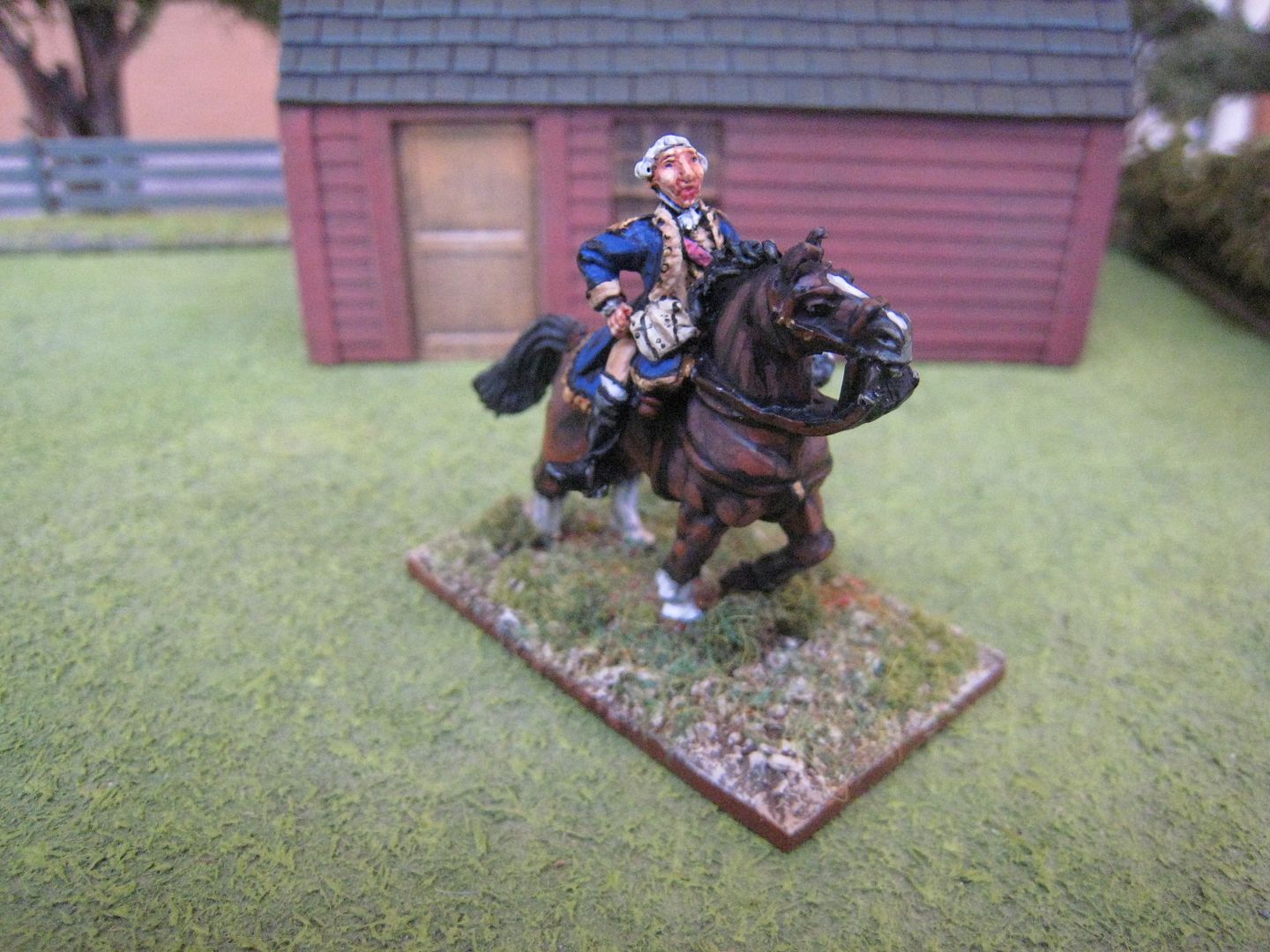
I'm not going to attempt a biography of Marie-Joseph Paul Yves Roch Gilbert du Motier de La Fayette, Marquis de La Fayette (what a name!). He was born in 1757 into a family with a long tradition of military service (one of his ancestors had been a companion-at-arms to Joan of Arc) and commissioned as an officer in the French army at the age of 13. By this time Lafayette had already become quite rich, as a result of inheritances from various relatives. Six years later he headed off to America to fight for liberty and glory (possibly encouraged by a hatred of the English born of his father's death at the Battle of Minden), and he was given the rank of major-general. This caused a bit of scandal at the time, as Lafayette's uncle-in-law was the French ambassador to Britain and at this stage in the war the French government's official position was against its officers heading off to America and doing anything that might provoke a war with Britain. Lafayette was undeterred and bought his own ship to take him there.
Lafayette began his war as a member of Washington's staff. He was wounded at Brandywine whilst trying to rally some Pennsylvania regiments. In June 1778, when Washington planned to attack the British during their withdrawal from Philadelphia, Lafayette was put in command of the reserve. However, in light of General Lee's reluctance to engage with the British, Lafayette was given command of the vanguard and he hurried after the British column as a presage to what quickly became the battle of Monmouth. He returned to France in February 1779 where, after a token week of house-arrest for disobeying the king, he began to agitate for a French invasion of Britain to support the Americans. That plan came to nothing, but Lafayette does seem to have been successful in persuading the government to send more men to America. He wasn't given another active field command until the siege of Yorktown in 1781, acting in various staff roles.
In the Caliver/"British Grenadier!" scenarios, Lafayette appears as a brigadier in the "early Monmouth" and Yorktown scenarios. So when I found him in my Old Glory lead-pile I thought it was time to add him to my collection of personalities. This is an, er, interesting sculpt. I can see what Old Glory are trying to do, and the figure does have the long, oval face that one sees in contemporary portraits. I think they've captured a youthful look, but I can also see how others might think this sculpt is a bit odd. I assume that it's a map he's not quite carrying (it looks like it's just resting on his thigh) - also a bit odd. Anyway, here he is.
This is the last bit of AWI for a while. I'll be filling the time until the next lot of AWI stuff by posting about the various other projects I've been working on, some of which aren't even historical! That should increase the rate of posts a bit.
1 figure. Painted September 2024.

